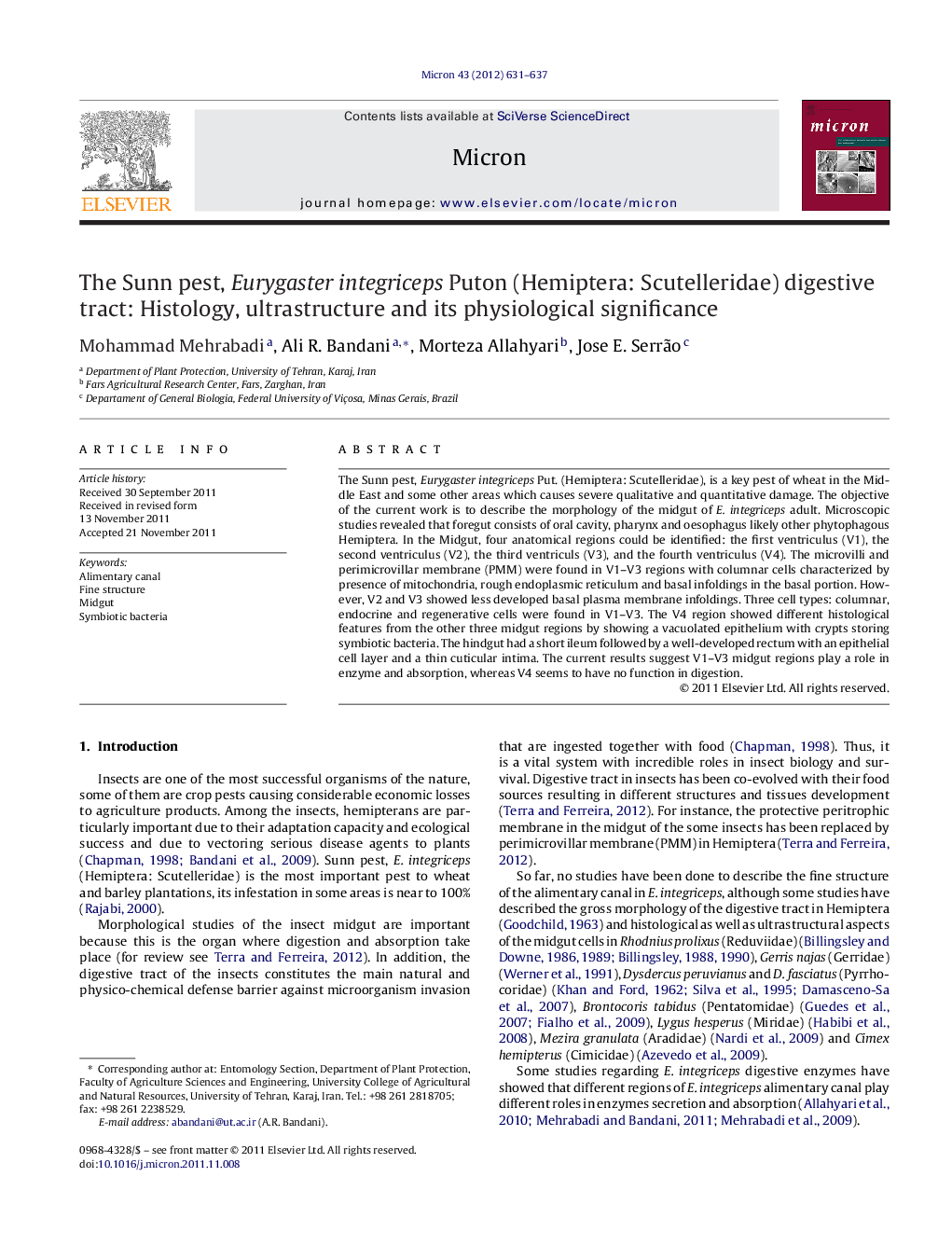| Article ID | Journal | Published Year | Pages | File Type |
|---|---|---|---|---|
| 1589299 | Micron | 2012 | 7 Pages |
The Sunn pest, Eurygaster integriceps Put. (Hemiptera: Scutelleridae), is a key pest of wheat in the Middle East and some other areas which causes severe qualitative and quantitative damage. The objective of the current work is to describe the morphology of the midgut of E. integriceps adult. Microscopic studies revealed that foregut consists of oral cavity, pharynx and oesophagus likely other phytophagous Hemiptera. In the Midgut, four anatomical regions could be identified: the first ventriculus (V1), the second ventriculus (V2), the third ventriculs (V3), and the fourth ventriculus (V4). The microvilli and perimicrovillar membrane (PMM) were found in V1–V3 regions with columnar cells characterized by presence of mitochondria, rough endoplasmic reticulum and basal infoldings in the basal portion. However, V2 and V3 showed less developed basal plasma membrane infoldings. Three cell types: columnar, endocrine and regenerative cells were found in V1–V3. The V4 region showed different histological features from the other three midgut regions by showing a vacuolated epithelium with crypts storing symbiotic bacteria. The hindgut had a short ileum followed by a well-developed rectum with an epithelial cell layer and a thin cuticular intima. The current results suggest V1–V3 midgut regions play a role in enzyme and absorption, whereas V4 seems to have no function in digestion.
Graphical abstractFigure optionsDownload full-size imageDownload high-quality image (182 K)Download as PowerPoint slideHighlights► Eurygaster integriceps has a typical Pentatomorpha four segmented midgut comprising the first ventriculus (V1), the second ventriculus (V2), the third ventriculs (V3), and the fourth ventriculus (V4). ► The microvilli and perimicrovillar membrane (PMM) were found in V1–V3 regions and three cell types: columnar, endocrine and regenerative cells were found in V1–V3. ► The V4 region showed a vacuolated epithelium with crypts storing symbiotic bacteria. ► The hindgut had a short ileum followed by a well-developed rectum with an epithelial cell layer and a thin cuticular intima. ► The results suggest V1–V3 midgut regions play a role in enzyme and absorption, whereas V4 seems to have no function in digestion.
